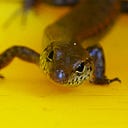Member-only story
In Praise of the Purple Swamphen
It will never be Bird of the Year
The Australian edition of the Guardian newspaper is running its annual Bird of the Year contest. In the 2021 version, the poll began with 50 species. Each day, the five birds that attract the lowest number of votes are taken out of the running. Several species have already dropped off the list, and the birds at the front of the flock are the ones most familiar to those in the populous South East. People vote for what they know.
Not appearing in this list — an oversight, surely — is the Purple Swamphen (Porphyrio melanotis). Not only are swamphens found across much of the country wherever there is freshwater (or something approximating it), but they are also large and colourful.
Look at them. That blue is almost regal. And the scarlet shield and beak give the bird a patrician profile. Yes, they tend to signal to one another by flashing their white backsides, and they make a noise, which, according to the Australian Bird Guide, begins with
kreek
and ends with
quinquinkrrkrrquinquinquinkrrkrr.
Oh, and although aquatic plants make up the bulk of their diet, they’ll catch and eat frogs, lizards, and the chicks of other waterbirds. Swamphens can hold and manipulate prey with their large two-toned feet.
